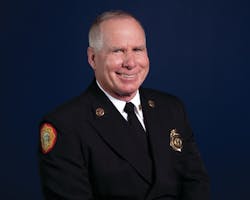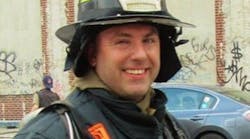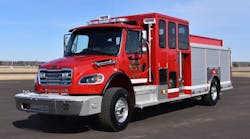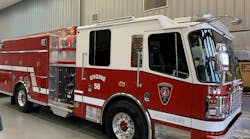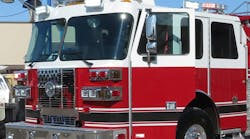WILLIAM W. “SHORTY” BRYSON became fire chief of Miami-Dade Fire Rescue (MDFR) in August 2011. He oversees an annual budget of more than $352 million and more than 2,400 employees, including nearly 2,000 uniformed firefighters. After receiving a bachelor of science degree from the University of Florida, Bryson was hired as a firefighter by the City of Miami in 1975. Over the next 35 years, he advanced through the ranks, serving the last nine as fire chief. During his tenure, the City of Miami earned an ISO Class 1 rating. He also served on the International Association of Fire Fighters (IAFF) Executive Board for 15 years and was president of the Miami Association of Firefighters IAFF Local 587 from 1990 to 1996. In 2008, he was awarded Fire Chief of the Year by the Metropolitan Fire Chiefs’ Association. Bryson serves on the Labor Management Initiative committee of the IAFF and International Association of Fire Chiefs (IAFC) and has been chair of the National Fire Protection Association (NFPA) 1710 committee for the past four years. The interview was conducted by Firehouse® Magazine Editor-in-Chief Harvey Eisner.
Firehouse: Miami-Dade Fire Rescue (MDFR) recently had a significant budget deficit. What kind of creative solutions were you able to work out with labor? How did avoid pay cuts?
Bryson: We had to cut a total of $26 million from our budget. The biggest part, $21 million, had to come from the IAFF bargaining unit, Local 1403. With the help of Local 1403, we did joint work sessions to determine where we could save that had the least impact to service and the employees. The largest financial single item was agreeing to reassign 95 administrative uniform personnel back to positions in Operations. The move would save close to $10 million for the current fiscal year. In addition, we cut some senior management positions and the bargaining unit gave up pay items, including taking three furlough days each fiscal year for the new three-year contract.
Firehouse: How did you restore a positive relationship between labor and management?
Bryson: Prior to becoming the fire chief, the relationship between the Local and the previous fire chief had reached a low point. My first priority was to demonstrate to the Local that I was here to re-establish a working relationship that was beneficial to both sides. I entered right into contract negotiations. I believe when the Local saw management putting some management positions on the table and looking for ways to prevent pay cuts, we won their respect and cooperation. After seeing our efforts to save, the bargaining unit opened up. They suggested ideas, good ones too. We had now established a relationship based on trust.
Firehouse: How do you communicate your philosophy with the members of the department?
Bryson: When a department has 2, 500 members, you have to use a multi-faceted approach to communicating, and I like to repeat some simple messages often. First, I had to ensure my staff and I had agreement on how we felt as a group; we had to literally be on the same page. In our various avenues of communication, we continued to push in the direction where we wanted to head. To get to the rank and file, I use videos once a month that are viewed on our intranet sites throughout the department. I try to keep them to about five minutes in length; you can really say a lot in that amount of time. I have quarterly battalion chiefs’ meetings to lay out my expectations and to hear their expectations for management – they are a two-way dialogue Also, whenever invited, I like to go to fire stations for lunch. I think the firefighters like the fact that I show up alone and spend some time with them and hear what they have to say.
Firehouse: When you meet with your 80 battalion chiefs, how do you stress what you expect from them?
Bryson: I have an agenda of various issues, one of which was “expectations.” I tell them I expect them to run their battalions and manage their people. One of my main principles is the power that personal influence has. I tell the battalion chiefs that they have to talk to members of their battalion and set clear expectations. I ask them to start easily with their influence and make corrections if expectations were not met.
Firehouse: Past penalties for offenses have been changed. Please explain your proactive progressive approach to offenders.
Bryson: I have a couple of theories on discipline. First, use the tack hammer instead of the sledgehammer. Discipline is intended to modify behavior. A tack-hammer approach basically means start with the least amount of discipline that will modify the behavior. This is beneficial in many ways – employees get a chance to modify their behavior and, in most cases, live up to expectations. It prevents long, protracted investigations and the discipline is appropriate because it is just, preventing costly grievance decisions. Second, use the sniper’s rifle instead of the shotgun. The sniper’s-rifle theory is one I learned over my career by watching policy after policy come out because one person committed some unique act. When we get someone like that, I like to make that person our “hobby.” We work on them and the other 99% are not burdened with more useless policies.
Firehouse: Does the department interact with the five nearby fire departments?
Bryson: Yes, all the departments in the county attend monthly meetings through an organization that was formed years ago called the Fire Officers Association of Miami-Dade (FOAMD). FOAMD has a wide variety of committees that enable departments to work together on issues of mutual interest. We also have a longstanding mutual aid agreement that works well. As fire chiefs, we have a good personal working relationship where we can call each other for any urgent need that may arise.
Firehouse: How have you been able to restore a positive morale to the rank and file?
Bryson: I think members of the department were looking for stabilization and direction. There were labor issues, an opened contract with pay cuts looming and a lot of negative publicity toward our profession. Successfully negotiating a three-year contract in seven weeks that had no wage cuts – some other concessions were in it – sent a pretty good message. We improved dramatically the relationship with the Local and started focusing a lot on being professional on and off duty. It is a great feeling as fire chief to see the rank and file here so qualified and able to perform. I feel like we have seen a steady positive increase in morale that is continuing.
Firehouse: Of nine labor contracts, fire was the first to be signed and sealed. How has your past experience helped?
Bryson: In the past, when I worked for the City of Miami Fire Department, I was a Local 587 Executive Board member for 15 years, serving as union president for the last six. I served my last nine years in Miami as fire chief. For two of those years, I was asked to also run the Office of Labor Relations for the city and took that on. Summing it up, I learned a lot from my experiences in these positions and still remember the principles I learned in each discipline. My best education has come from what I have experienced and learned in the field.
Firehouse: The training academy was built in 2010. What features benefit the department?
Bryson: When I first came to Miami-Dade Fire headquarters and went behind to our new training center, I was in awe. It has a pool that has communication abilities. Live-fire props for auto, tanker rollover, shipboard, four types of buildings and layouts for tech rescue evolutions. There is a huge outdoor shelter and multiple class and meeting rooms. There is even a portion of the facility for recruits to work in a mock fire station with a kitchen, bunks, and truck bay. Right now, the one thing we are missing is the correct number of training staff for a department of this size. The current local economy has really hit us hard, but we look to improve in the future.
Firehouse: How does training reach every level within the department?
Bryson: The Training Division has a yearly plan for various classes and drills. In all honesty, I haven’t been able to put together a comprehensive plan yet, but know we will take on that task soon.
Firehouse: What training do newly promoted officers receive?
Bryson: The training of new officers is one of my top priorities, even if they were promoted prior to my arrival. Currently, our new-officer classes last for two weeks. I would love to train the new officers for more time, but the budget is lean and it was tough to even make the two weeks happen. The training educates our officers on many issues they will face at their new rank. I spend time with each group and like to tell them where we are trying to go as a department and how they fit into that plan. I answer questions and listen to their comments.
Firehouse: How does your fleet of helicopters fit into the fire department mission?
Bryson: We cover a total of 1,900 square miles. We have areas that have extremely long transport times and shortening them makes the difference between life and death. We have two full-time helicopters, one north and one south. In addition, we have a backup fleet. We keep the helicopters operational around the clock. They are a unique tool that fits many circumstances – water dumps for wild land fires, searches for lost people in the Everglades, rescues at sea and, of course, medical transports. We use a four-person flight crew: pilot, co-pilot and two flight medics. Our helicopters are very valuable assets that have served our citizens well.
Firehouse: Has moving fire dispatch into headquarters made a difference in operations and efficiency?
Bryson: We are building that out presently, so they haven’t moved yet. I think the move will be a double positive. It will improve morale within the dispatcher ranks, which in turn improves operations in the field. We are making sure to design the area to suit the job. Our dispatchers are so important in what we do and I am very impressed with their abilities. They dispatch 240,000 calls a year and handle some huge incidents. When they move to our headquarters, the message is simple: “We want you here where you belong.”
Firehouse: A new medic (rescue) unit was added to the department and a second rescue unit was added to an existing station. Do you require more EMS coverage?
Bryson: Absolutely! Currently, we have areas where units are available only 40% of the time. I feel that number is unacceptable. When the economy improves and tax rolls increase, I feel we must add rescue (medic) units to busy areas. We currently use ALS (advanced life support) suppression apparatus to handle many EMS calls. I believe suppression units should be available at a much higher rate than 40% and the way to do that is to add more rescue units in the busy areas. We will continue to review and make adjustments, but unless the calls decline, which I don’t see happening, we will need more resources.
Firehouse: No new firefighters have been hired since 2008. About 800 were hired in the years before that. How many personnel do you need to hire?
Bryson: Based upon our daily minimum staffing of 411 personnel in Operations, we need about 1776 (4.3 per position) assigned. We’re down about 50 firefighters right now and lose a few every month. So we’re anxious to get moving on a new list and class.
For more news and training on leadership and command, visit: http://www.firehouse.com/topics/leadership-command.
